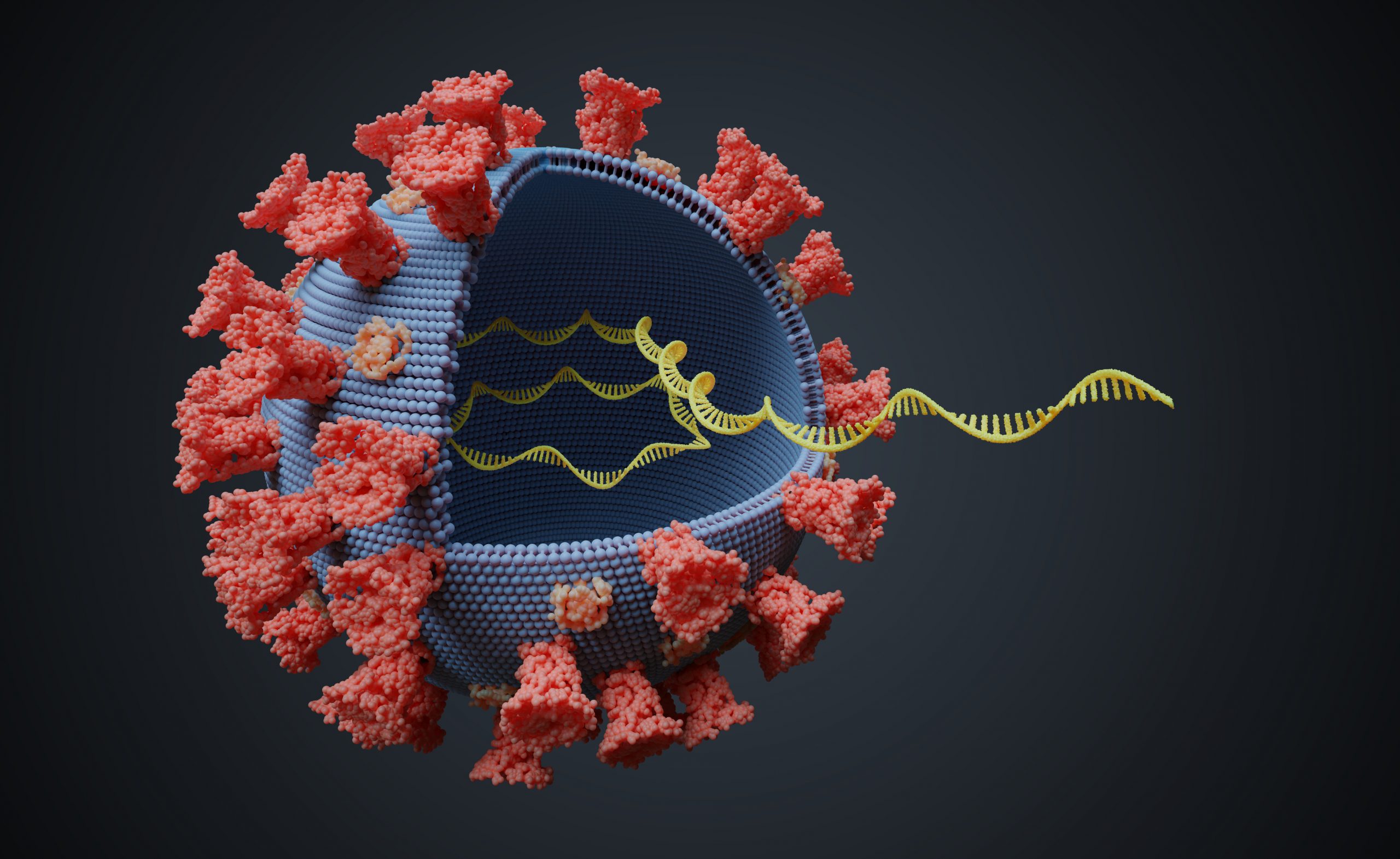
Lethal Mutagenesis
By Pei Chen
Amidst the COVID-19 pandemic, we have been living under the shadows of viruses. While viruses have small genomes, they can compromise our health, and with it, our sanity and society. The original strain of SARS-CoV-2 was destructive, and its countless variants are even more daunting. In the past two years, we have all learned our fair share of virology from the news, and the climbing incidence of delta—and now omicron—variants provides insight to virus mutation.
Take the delta variant, for example. Through mutation, the delta variant gained the evolutionary advantage of improved transmissibility (Liu et al., 2021), replication fitness, and immune evasion (Mlcochova et al., 2021). Tests have also shown that the viral load found in delta patients’ nasal passages is more than 1,200 times larger than that in the first reported cases of COVID from Wuhan, China.
Fundamentally, mutations are mistakes made during genomic replication. RNA viruses, in particular, have high frequency of mutation during replication: It is estimated that around one error is introduced into the RNA virus genome per every replication. Some suggest that this is because RNA-dependent RNA polymerase (RdRp), an enzyme required for RNA replication, has a lower proofreading ability than its DNA counterpart (Belshaw et al., 2008).
While there can be advantageous mutations, most mutations are either deleterious or inconsequential (Duffy, 2018). In the constant race between mankind and viruses, mutation is viruses’ tactic of staying on top. But is viral mutation always bad for us, the human hosts?
Not necessarily. In Eigen’s theory of error catastrophe, there is an error threshold to genetic mutation rate: When the mutation rate exceeds the threshold, deleterious mutations would render the virus ineffective and lead to local extinction (Summers & Litwin, 2006). While this theory has faced mixed reviews, it is associated with the term “lethal mutagenesis,” which means death by mutation. Many scientists turn to lethal mutagenesis for antiviral treatments, and studies have been conducted on lethal mutagenesis’s effect on various viruses, including hand-foot-mouth disease, influenza, and poliovirus (de Avila et al., 2017).
In fact, some pharmaceutical companies are looking into lethal mutagenesis as a potential solution for COVID-19 treatment. Remdesivir, the first approved treatment for COVID-19 patients, targets RNA-dependent RNA polymerase (RdRp) and impedes its progression. Molnupiravir, on the other hand, is a COVID-19 treatment developed by Merck. Described as “coding for catastrophe,” it targets the same enzyme by increasing the frequency of G-to-A and C-to-U mutations (Malone & Campbell, 2021). The phase 3 clinical trial targets unvaccinated adults with mild to moderate Covid-19 infection.
On November 4, 2021, Merck announced the FDA and EUA provided emergency authorization of molnupiravir, and the company is manufacturing 1.7 million courses for the US government (Merck & Co., 2022). Viruses have always been known as hi-jackers that manipulate host systems in favor of their replication and transmission. It is time that we, the hosts, turn the intruders’ powerful weapon of mutation against them.
References
Belshaw, R., Gardner, A., Rambaut, A., & Pybus, O. G. (2008). Pacing a small cage: mutation and RNA viruses. Trends in Ecology & Evolution, 23(4), 188–193. https://doi.org/10.1016/j.tree.2007.11.010
de Avila, A. I., Moreno, E., Perales, C., & Domingo, E. (2017). Favipiravir can evoke lethal mutagenesis and extinction of foot-and-mouth disease virus. Virus Research, 233, 105–112. https://doi.org/10.1016/j.virusres.2017.03.014
Duffy, S. (2018). Why are RNA virus mutation rates so damn high? PLOS Biology, 16(8). https://doi.org/10.1371/journal.pbio.3000003
Liu, Y., Liu, J., Johnson, B. A., Xia, H., Ku, Z., Schindewolf, C., Widen, S. G., An, Z., Weaver, S. C., Menachery, V. D., Xie, X., & Shi, P. Y. (2021). Delta spike P681R mutation enhances SARS-CoV-2 fitness over alpha variant. bioRxiv, 2021.08.12.456173. https://doi.org/10.1101/2021.08.12.456173
Malone, B., & Campbell, E. A. (2021). Molnupiravir: Coding for catastrophe. Nature Structural & Molecular Biology, 28(9), 706–708. https://doi.org/10.1038/s41594-021-00657-8
Merck & Co., Inc. (2022). Merck and Ridgeback’s molnupiravir, an oral COVID-19 antiviral medicine, receives first authorization in the world. Merck. Retrieved April 04, 2022, from https://www.merck.com/news/merck-and-ridgebacks-molnupiravir-an-oral-covid-19-antiviral-medicine-receives-first-authorization-in-the-world/
Mlcochova, P., Kemp, S. A., Dhar, M. S., Papa, G., Meng, B., Ferreira, I. A. T. M., Datir, R., Collier, D. A., Albecka, A., Singh, S., Pandey, R., Brown, J., Zhou, J., Goonawardane, N., Mishra, S., Whittaker, C., Mellan, T., Marwal, R., Datta, M., … Gupta, R. K. (2021). SARS-CoV-2 B.1.617.2 delta variant replication and immune evasion. Nature, 599(7883), 114–119. https://doi.org/10.1038/s41586-021-03944-y
Summers, J., & Litwin, S. (2006). Examining the theory of error catastrophe. Journal of Virology, 80(1), 20–26. https://doi.org/10.1128/jvi.80.1.20-26.2006
Banner image from iStock
